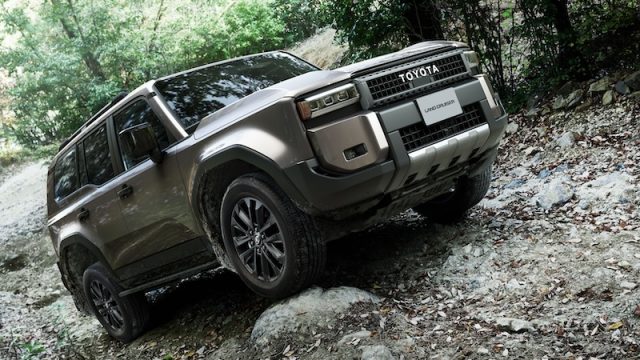Toyota has sold over 1 300 units of the new Land Cruiser Prado in South Africa since its June 2024 launch, a sales triumph most brands can only dream of. But is it possible that its commercial success is fuelled more by hype and loyalty than quality?
There’s no denying that the Prado is a status symbol. From envious stares on the road to conversations about waitlists, owning a Prado means more than just driving an SUV – it’s about belonging to a legacy.
This deep connection to the Land Cruiser’s off-road heritage greatly enhances the Prado’s desirability. However, such a revered name brings high expectations. The Prado must deliver excellence at every turn, leaving no room for mediocrity or excuses.

A surprising flaw
Let’s begin with a rather shocking revelation: the Prado’s doors feel hollow and tinny. This disappointment confronted me when I shut the driver’s door for the first time, and the window rattled for a split second before settling.
It’s a flaw that’s hard to overlook for a vehicle in this price range, let alone a new Toyota. Was this a nod to the utilitarian Land Cruiser 70 Series with its lightweight, tin-can doors? Perhaps. But humour aside, this cheapness feels out of place.
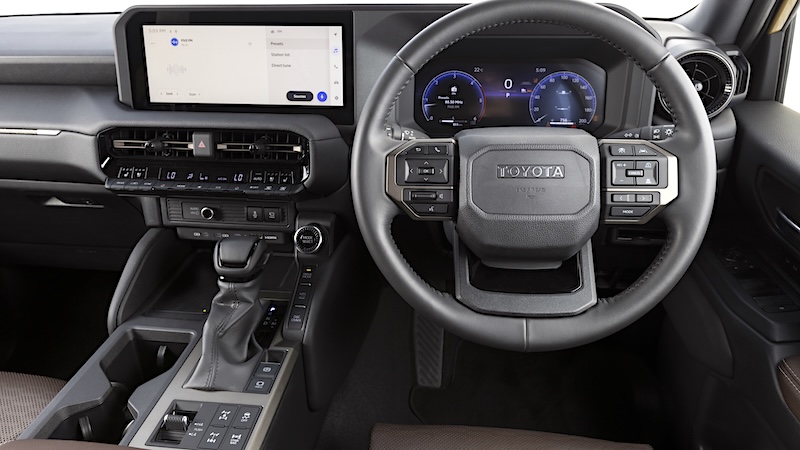
Inside the cabin, however, the Prado offers a wealth of features. The VX-R trim includes ventilated seats, a heated steering wheel for frosty mornings, and built-in navigation – useful when cell service fails deep in the bush. Other highlights include nine airbags, a heads-up display, and piano-style air-conditioning buttons, though these feel slightly flimsy. I wouldn’t call it a deal-breaker, but it stands out in a vehicle of this stature.
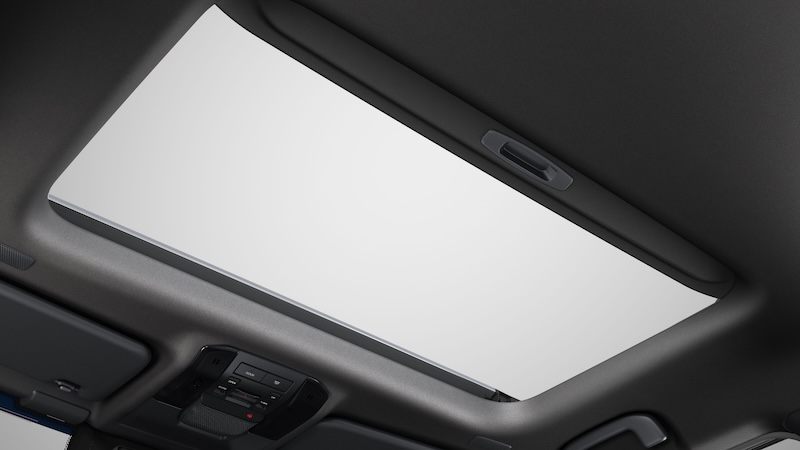
There’s a sliding sunroof, perfect for wildlife viewing at the Kruger (if you want to be a pride of lions’ KFC bucket), and charcoal-coloured pillars that are practical for dusty and muddy environments. However, the elbow rests on the doors could have been softer – a detail that matters on long journeys.
The dashboard is upholstered with imitation leather, but it’s not as plush as the soft-touch materials found in European rivals. Instead, it has a vinyl-like finish reminiscent of dashboards from decades past.

Luke-warm performance
The Prado is powered by a 2,8-litre turbo diesel engine, producing 150 kW and 500 Nm. It’s the same power-plant used in the Hilux and Fortuner. While sufficient for most off-roading and most other situations, it lacks the punch of the Land Cruiser 300’s 3,3-litre V6 diesel (225 kW and 700 Nm) or the exciting 3,5-litre petrol V6 (305 kW and 650 Nm).
At 2,5 tons, the Prado’s weight blunts performance, especially given that it’s 300 kg heavier than the Fortuner, with almost identical engine specs. Its aerodynamic inefficiency (perhaps comparable to that of a Rubik’s cube) further dulls speed.
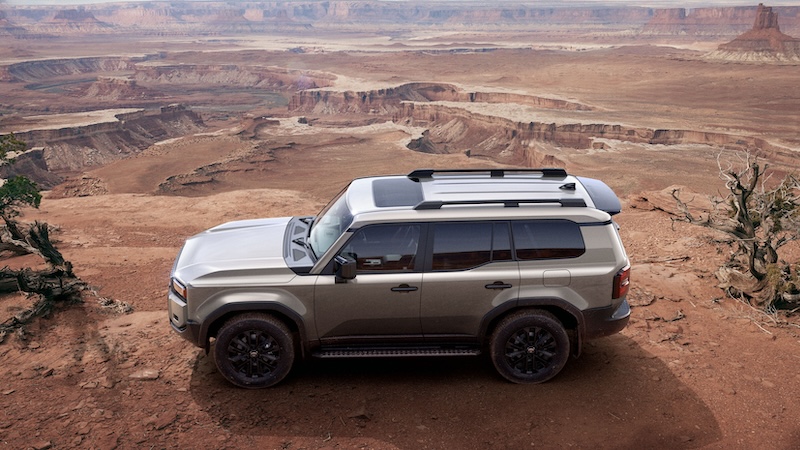
This will make the Prado feel sluggish to those accustomed to swift touring in the Land Cruiser 200 or 300. Its boxy, wind-resistant design (comparable to a Rubik’s cube) adds to the aerodynamic drag. Those accustomed to swift long-distance touring in the Land Cruiser 200 or 300, or older V6-petrol Prados, may feel frustrated.
That said, the 8-speed automatic transmission is a noticeable upgrade over the Hilux and Fortuner’s 6-speed auto, providing smoother shifts and increased refinement.

Comfort over speed
During this test, we didn’t get the chance to venture off-road – something we hope to address soon. It must be said, however, that Tshwane’s roads now rival some of Gerotek’s gruelling suspension test tracks.
For on-road driving, the Prado offers three modes: Normal, Eco, and Sport. While Sport mode adds some visual flair to the instrument cluster, it doesn’t deliver a dramatic boost in performance. This is unlike the Hilux, for example, where the Power mode makes a noticeable difference.
An exceptional ride
Despite its ladder-frame construction, the Prado handles potholes and uneven surfaces exceptionally well – perhaps better than any Land Cruiser ever to emerge from a Toyota factory. Ride comfort is top-notch for this segment, rivalling even the latest Land Rover Defender.
Over many kilometres on Pretoria’s dreadfully scarred roads, the Prado proved itself to be a comfortable car for driving in the city, where it will spend most of its life.
To improve in-car comfort, Toyota has attached padded knee rests on either side of the centre console. This is useful in preventing bruised knees during bumpy rides.
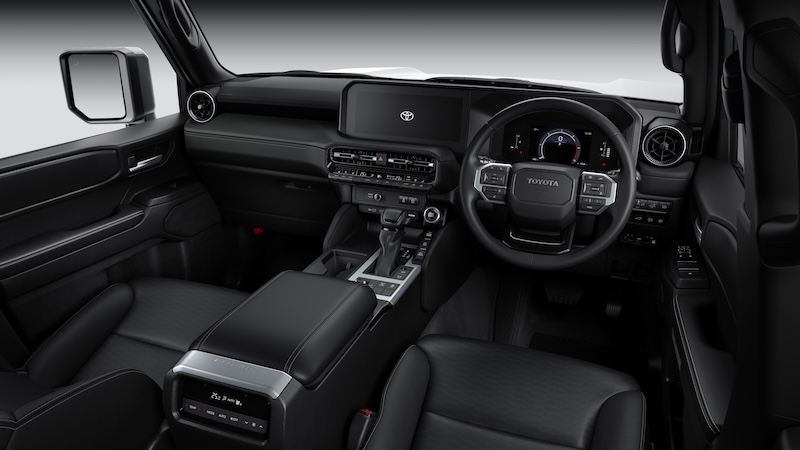
Nimble for its size
For a vehicle of this sort, the steering is direct and doesn’t require excessive twirling of the wheel to make it go where you want it to. This makes the Prado easy to drive in urban areas, and more manageable than the Ford Everest and, from what I hear, the Ineos Grenadier.
For a large SUV, the Prado’s steering is pleasantly precise, requiring minimal input to guide it where you want. This responsiveness enhances its drivability in urban environments, making it more user-friendly than the Ford Everest and, by most accounts, the Ineos Grenadier.
However, the large, upright side mirrors generate wind noise when travelling at over 90 km/h. In contrast, other SUVs (like the Isuzu MU-X) feature more aerodynamic wing mirrors, reducing drag and noise. Given Toyota’s influence in the market, one wonders why the brand isn’t leading the way with sleeker designs that would improve fuel efficiency.

Aerodynamics: A missed opportunity?
Boxy SUVs, like the Prado and its competitors, are clearly in vogue. But Toyota could set a new trend by focusing on aerodynamic efficiency, much like the Mercedes EQS SUV, Volvo EX90 or BMW iX.
While the Prado’s 10.3 km/l average fuel consumption (as shown on the trip computer) is respectable, a more aerodynamic design could improve both efficiency and decrease noise levels in the cabin.
Interestingly, the GWM Tank 300, which shares the Prado’s squared-off aesthetic, generates far less wind noise. This suggests that dedicated engineering, even for boxy vehicles, can yield better results.
Alternatives: The Lexus GX and more
The upcoming Lexus GX, expected to launch in March 2025, offers an intriguing alternative. Powered by a 3,5-litre twin-turbo V6 (detuned to 260 kW and 650 Nm), the GX promises superior refinement and a 10-speed automatic transmission.

Also, Toyota wouldn’t dare give the GX the same “built-to-a-price” feel of certain elements of the new Prado. As the GX will sit between the RX and the LX in the Lexus line-up, expect it to be carry a sizeable price premium over the Prado.
The 300 option
For those in search of power, the Land Cruiser 300 remains a compelling option. While a pre-owned Cruiser 300 might be the smarter financial move, even the entry-level 300 GX-R at R1,46 million offers first-rate build quality and superior performance.
Sadly, pre-owned Cruiser 300s don’t come cheap. A quick glance at the classifieds showed a 2023 Land Cruiser 300 3.3D ZX with 41 000 km for R1 879 900 and a 2023 Land Cruiser 300 3.5T ZX with 51 000 km for R1 699 900. Compare these offers to the prices of new 300s below:

- Toyota Land Cruiser 300 3.3D GX-R – R1 458 900
- Toyota Land Cruiser 300 3.3D ZX – R2 004 100
- Toyota Land Cruiser 300 3.5T ZX – R2 043 100
- Toyota Land Cruiser 300 3.3D GR-Sport – R2 060 000
- Toyota Land Cruiser 300 3.5T GR-Sport – R2 095 100
As for the ‘old’ Prado as an alternative; we found a 2023 Prado 2.8GD VX-L with 14 000 km offered for R1 159 900. (See new Prado prices at the end of the article.)
The next Fortuner
Yet another option to consider is the next-generation Fortuner, expected in 2026. With the same platform as the Prado, it’s likely to offer similar capabilities at a lower price. Given many South Africans’ growing preference for value over prestige, the Fortuner might present an irresistible alternative, especially with improved perceived quality, higher ground clearance, and lower running costs.
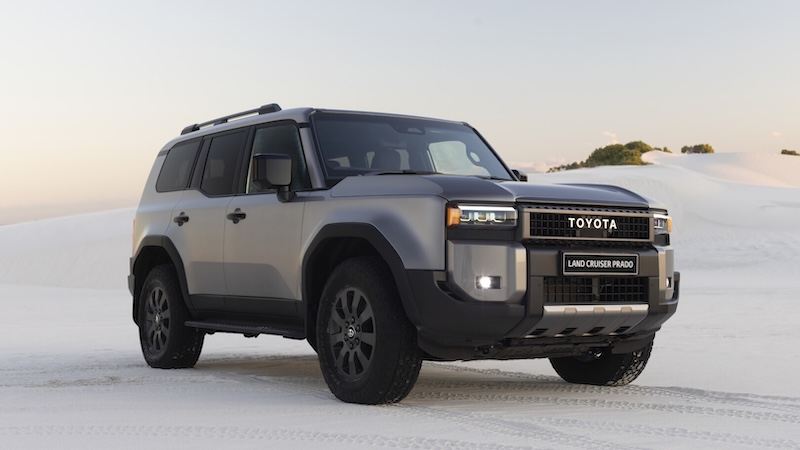
Merit or devotion?
Brand loyalty plays an enormous role in the Prado’s success. Much like a sports team’s fans, most Prado buyers are committed for the long haul. However, this loyalty can sometimes blind consumers to the point where they don’t realise the emperor isn’t wearing a single thread.
Loyalty alone shouldn’t shield any product from scrutiny. The question isn’t whether the Prado will sell, because it does and will. The real question is whether it dominates the market on merit, or if it’s simply benefiting from Toyota’s iron-clad reputation and the devotion of its fans.
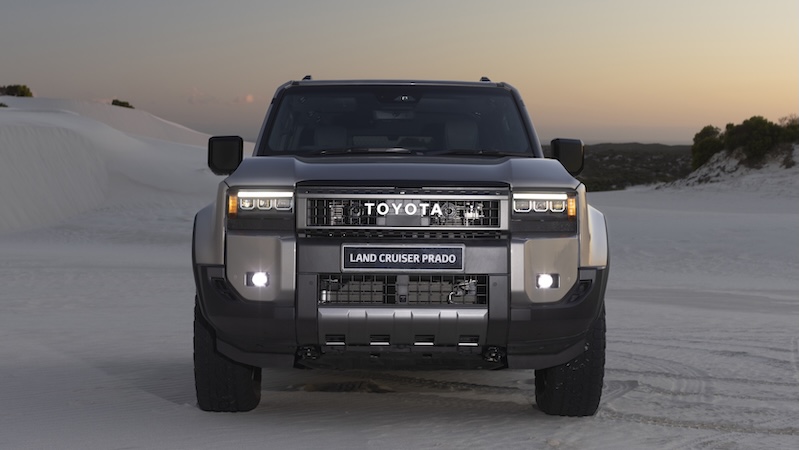
Conclusion: A Prado for the faithful
The 2024 Prado remains a solid, capable SUV, but it doesn’t quite feel like Toyota’s finest work. Yes, it’s a competent vehicle with thoughtful features. And yet, certain build-quality issues, like the doors that go “GRRR!” for a split second when pulled shut, detract from the overall experience.
For die-hard fans of the Toyota brand, the Prado will undoubtedly deliver on expectations. However, with alternatives like the Lexus GX, Land Cruiser 300, and the upcoming Fortuner on the horizon, buyers would do well to explore their options. And don’t forget the Land Cruiser 76 and wild cards like the Lexus RX, Nissan Patrol, GWM Tank 500, VW Touareg, Jeep Grand Cherokee, Hyundai Palisade (picture below), and so on.

In the end, buying a Prado is a bit like cheering for your favourite sports team. Even when they don’t play their best game, you support them regardless. But just like in sports, it’s fair to ask: Was this win truly earned?
The Toyota Land Cruiser Prado scores 4 out of 5.
4.0 out of 5.0 starsPricing
- Toyota Land Cruiser Prado 2.8GD TX – R1 296 300
- Toyota Land Cruiser Prado 2.8GD VX-R – R1 448 900
Note that the First Edition Prado is no longer available.


